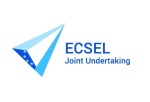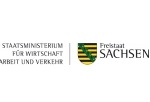Publications
The ADMONT project uses Zenodo as its open research data repository, in order to grant Open Access to scientific publications. Have a look at our Zenodo community ADMONT
"Thin film-organic photodiodes on complementary metal-oxide-semiconductor (CMOS) materials structured via ortogonal photolithography for sensor applications"
Matthias Jahnel, Matthias Schober, Karsten Fehse, Olaf Hild, Uwe Vogel
"A novel current-mode actuator driver for enhanced piezoelectric reliability"
Bernadette Kinzel, Frank Vanselow, Erkan Isa, Linus Maurer
"A non-isolated asynchronous low power high voltage boost converter for discontinuous conduction mode and portable applications"
Frank Vanselow, Bernadette Kinzel, Erkan Isa, Linus Maurer
"Toward consistent circuit-level aging simulations in different EDA environments"
Fabio A. Valerde Gonzalez, Kay-Uwe Giering, André Lange, Insaf Lahbib, Sonja Crocoll
"CMUT with mechanically coupled plate actuators for low frequencies"
Marcel Krenkel, Michael Stolz, Sandro G. Koch, Mario Kupnik
"ADMONT KET Pilot Line: A success story"
Karl-Heinz Stegemann
"Structured organic photodetectors via orthogonal photolithograpy"
Jahnel, M; Schober, M; Fehse, K; Hild, O.R.
"NBTI and HCI models for circuit level aging simulations in different EDA environments" F.A. Velarde Gonzalez, A. Lange, S. Crocoll, R. Jancke
[ More ]
Abstract: The significance of transistor degradation due to aging mechanisms such as BTI or HCI has increased significantly with the continuous scaling down of CMOS technologies and their presence in safety-critical systems. In order to deliver the reliable systems that the industry currently demands, it is necessary to apply aging simulations in IC design projects. However, the capabilities that are available strongly depend on the EDA environment and tools. In this paper we present the work done in a case study to characterize and model NBTI and HCI degradation for X-FAB’s XU035 technology, and we discuss a methodology developed to implement and integrate user-defined aging models for circuit level simulation with consistent results across different design environments.
"A single cell technology for personalised medicine"
Gianni Medoro, Sergio Maximilian, Elena Bevilacqua
"Narrow Bandwidth Top-Emitting OLEDs Designed for Rhodamine 6G Excitation in Biological Sensing Applications", Matthias Jahnel, Beatrice Beyer, Michael Thomschke, Karsten Fehse, Felix Krujatz and Karl Leo, Electronics 2015/4, pp. 982-994
[ More ]
Abstract: Organic light emitting diodes (OLED) are promising candidates offering in optical sensor applications to detect different gas compositions and excitable optical marker groups in chemical and biological processes. They enable attractive solutions for monitoring the gas phase composition of e.g., dissolved molecular oxygen (O2) species in bio reactors or excitation of fluorescent markers. In this work, we investigate different OLED devices for biomedical applications to excite the fluorescent dye rhodamine 6G (R6G). The OLED devices are built in top emission geometry comprising a distributed Bragg reflector (DBR) acting as optical mirror. The OLED is optimized to provide a very narrow emission characteristic to excite the R6G at 530 nm wavelength and enabling the possibility to minimize the optical crosstalk between the OLED electroluminescence and the fluorescence of R6G. The DBR includes a thin film encapsulation and enables the narrowing of the spectral emission band depending on the number of DBR pairs. The comparison between optical simulation data and experimental results exhibits good agreement and proves process stability.
Keywords: OLED; sensoric; DBR; biochemical sensor; Rhadamin6G; narrow emission; lab on chip
"A novel Micropump Driver used in environmental sensor applications", Bernadette Kinzel, Detlef Bonfert, Florian Lippert, Frank Vanselov, Erkan Isa, Doris Schmitt-Landsiedel, Linus Maurer, IEEE SENSORS 2016
[ More ]
Abstract: The reaction times of environmental sensor units are potentially improved by the use of micropumps. Those micropumps require miniaturized driver electronics which generate dual-polarity high voltage pulses optimized to drive light, capacitive load piezoelectric micropumps. This paper presents a novel micropump driver consisting of a DC/DC converter circuit that is based on a combination of a boost converter and a charge pump. This combination generates asymmetric high voltages on two individual synchronous output nodes from a 5-V supply. Through reduction in the number of coils this method supports the overall system shrinking and allows a high level of chip integration. Compared to state-of-the-art miniaturized drivers, the presented topology allows single-ended and differential micropump driving at higher voltage levels (-100 V/+150 V). By connecting the micropump differential to the converter output, the maximum voltage can be increased to 250 V for capacitive micropump loads of up to 200 nF. The converter topology was validated by measurement. The presented novel, miniaturized micropump driver topology allows micropump integration into mobile devices for new fields of sensor applications with rapid reaction times.





